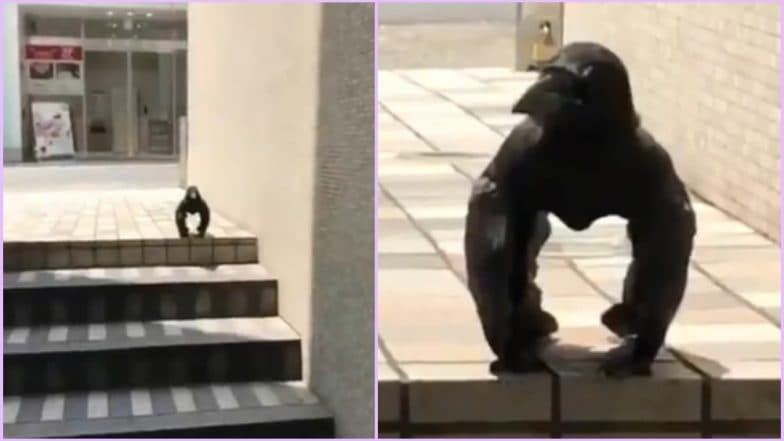Pigeons aren't exactly known for being the most
exciting or elegant of birds. They're usually found pecking at a
stale meal deal sandwich that some poor office worker dropped on the
floor.
However,
one man in Bracknell stumbled
across a pigeon that was decidedly more flamboyant than the
grey-scale city dwellers we know and hate, and that's because it just
so happened to be bright pink.
Ben
Hanks, 26, spotted the exotic-looking creature scavenging in a business park in
the Berkshire town.
While the
bird hasn't been officially identified yet, it looks similar
to the Nesoenas Mayeri pink pigeon, which is native to
Mauritius.
There are
fewer than 500 of the brightly-coloured birds left, but it seems
one may have made its way to Arlington
Square Business Park on 17 June.
Accountant
Ben was enjoying a lunch outside with a friend, when
he clocked the unusual bird searching for food near his office.
Ben,
from Arborfield, Berkshire, said: "I have never seen anything like
this before and we were both very confused when we first spotted it.
"I
reached for my phone to take a photo immediately as I didn't think anyone would
believe me if I didn't have evidence.
"We
did find it very funny, but then tried to come to some form of explanation
behind its colouring.
"There
were no other pigeons or birds around, just this one pecking at the ground. It
didn't seem bothered by us at all."
The pink
pigeons are listed as vulnerable by conservationists, and are
almost exclusively found living in Mauritius and Madagascar, in the Indian
Ocean.
The birds
were on the verge of extinction in 1991, when numbers slumped to as low as 10.
Thankfully,
over the years, numbers of the tropical bird have steadily increased, and now
it's through that there are around 500 living in the wild.
There
have been previous reports of pigeons changing colour after eating
pink food - much like with flamingos - or of their wings being deliberately
dyed.
In 2015,
there was a spate of pink pigeon sightings across the UK, which were eventually
traced back to a pigeon fancier, who said dyeing the birds' feathers helped to
ward away falcons.
However,
the RSPCA has warned against the practice, saying it is
unnecessary and could cause harm to the birds if ingested.
UDPATE
21st June
Pink
pigeon spotted in Bracknell was DYED that colour, say RSPCA
"Pink"
pigeon spotted in Bracknell
SIGHTINGS
of a very rare pigeon spotted around Bracknell recently
have been quashed after the RSPCA confirmed it is in fact an ordinary pigeon.
However,
it has been confirmed that the bird spotted in the area had been dyed that
colour by a person.
An RSPB
spokesperson stated that the bird's bright hue was not natural, meaning it is
not from the Nesoenas Mayeri family.
Accountant
Ben, from Arborfield, was enjoying a lunch outside with a friend when he
spotted the bird searching for food near his office.
Speaking
soon after the bizarre discovery, he said: "I have never seen anything
like this before and we were both very confused when we first spotted it.
"I
reached for my phone to take a photo immediately as I didn't think anyone would
believe me if I didn't have evidence.
"We
did find it very funny, but then tried to come to some form of explanation
behind its colouring.
"There
were no other pigeons or birds around, just this one pecking at the ground. It
didn't seem bothered by us at all."
An RSPCA
spokesperson said: "Birds are living creatures and dyeing them in this way
sends out an extremely worrying message that they could be viewed as novelties
rather than as intelligent, sentient beings with feelings.
"Dyeing
a pigeon could cause health problems, impair his ability to fly and make him
more vulnerable to predators.
"The
dye could also be toxic and he would be likely to try to clean the substance
from his feathers which could result in him swallowing it."
